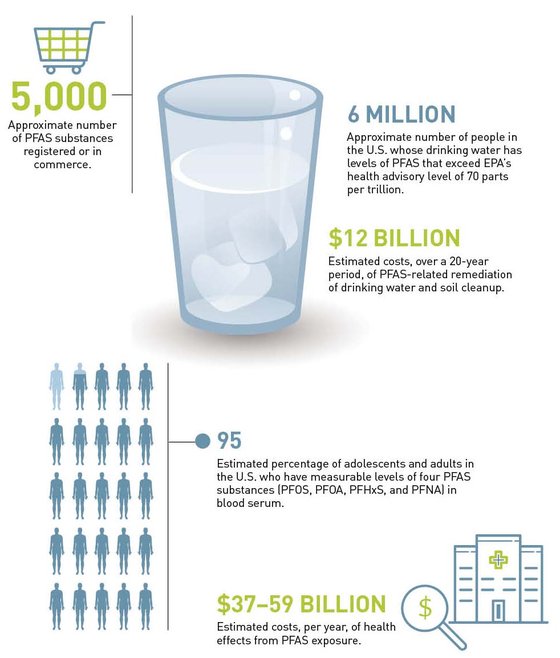DEPARTMENTS
BY THE NUMBERS
The Problem of PFAS
From “PFAS Senate Hearing, Birnbaum’s Expert Scientific Testimony” in May 2019 issue of Environmental Factor, a publication of the National Institute of Environmental Health Sciences:
“PFAS … affect multiple tissues in both males and females, of multiple species, at all developmental life stages,” [said Dr. Linda Birnbaum, director of NIEHS and the National Toxicology Program]. “It’s not just cancer. It’s not just effects on the immune system, it’s not just effects, for example, on the kidney or the liver, it’s also effects on development and reproduction, and pretty much almost every system that you can think of.”
SOURCES
Environmental Factor: “PFAS Senate Hearing, Birnbaum’s Expert Scientific Testimony” (May 2019).
International Journal of Environmental Research and Public Health: "Serum Biomarkers of Exposure to Perfluoroalkyl Substances in Relation to Serum Testosterone and Measures of Thyroid Function among Adults and Adolescents from NHANES 2011–2012" (June 2015).
National Academies: “PFAS: Controlling, Preventing, and Understanding Exposure” (October 2019).
Vimeo: “PFAS Workshop, EHMI” (videos, September 2019).

Tap on the graphic to open a larger version in your browser.
In August, The Knoxville News Sentinel reported that a student intern and a researcher at Oak Ridge Associated Universities had devised an experiment to replicate the McCluskey incident in order to study the effects of radiation on the body. By irradiating vials of their own blood for different lengths of time, the researchers hope to generate data that clinicians and first responders can refer to following an exposure incident.
Read more from the News Sentinel.

